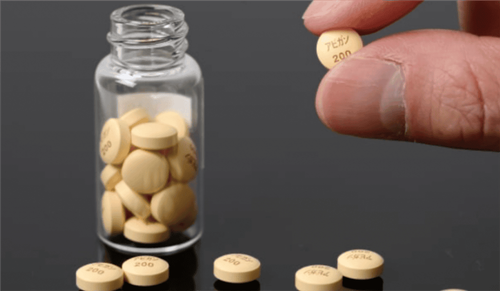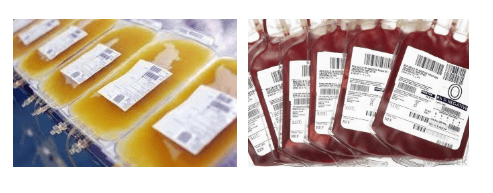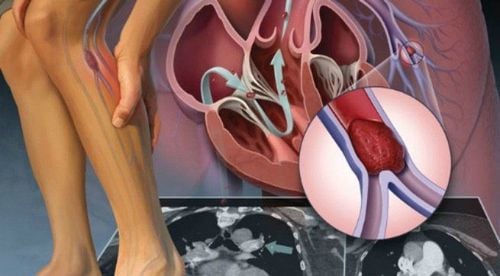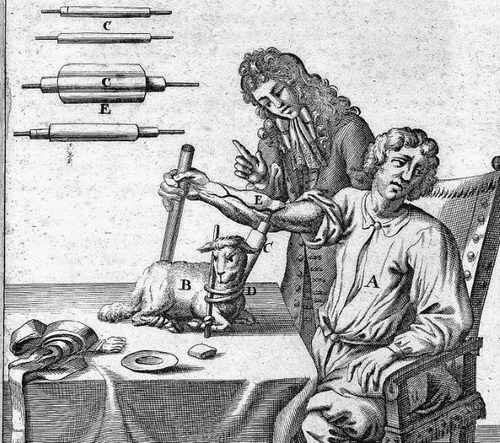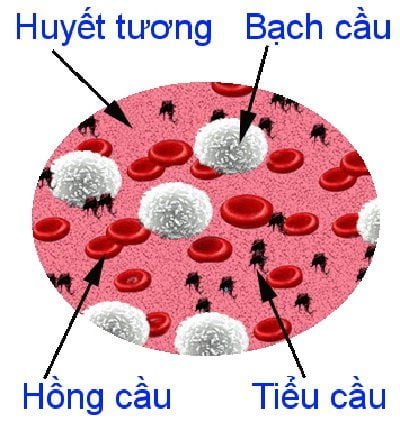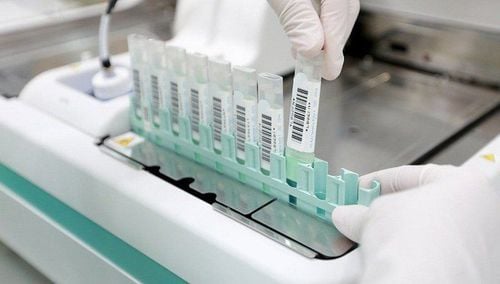This is an automatically translated article.
The article was written by a Doctor of Hematology - Blood Transfusion - Laboratory Department - Vinmec Ha Long International Hospital.Blood transfusion is the process of transferring missing blood products into the vein to the patient. The first stage of blood transfusion is to use whole blood. Today, medicine has developed and has prepared many blood products, so only the components that the patient lacks such as red blood cells, white blood cells, plasma, clotting factors and platelets ...
Before 1954: Blood transfusion in Vietnam was first organized by the French army at Don Thuy Hospital (currently 108 Military Hospital), providing blood for the French army. Then there are a number of hospitals in Saigon also organized and managed by the French army.
From 1954 - 1974: After peace (1954), we took over the capital, the army took over Don Thuy Hospital (French called Lanessan hospital) and changed its name to Military Medical Institute 108- Blood Transfusion Center still used preserved and operated by the former cadres who stayed.
1956 Dr. Vu Trieu An was assigned to be in charge of this center. This can be considered as the first blood transfusion facility of the Democratic Republic of Vietnam.
Also in 1956: Viet Duc Hospital opened the Department of Blood Collection and Blood Transfusion.
In 1970, Prof. Bach Quoc Tuyen established the Blood Collection Department at Bach Mai Hospital, until now the Central Institute of TM (since December 31, 1984). Our blood transfusion at this time is mainly for the war, for the army, mainly for whole blood transfusion, blood collection by glass bottles (open cycle) and transfusion during the day. There is no means of preserving and separating blood components.
From 1975 to 1992 : The demand for blood increased, the main source of blood was obtained from blood sellers (> 90%). Means of collecting blood by means of a glass bottle (open cycle). Blood transfusion safety is mainly about cross-reactivity and grouping, finding homologous blood units. Infections only screen for: malaria, syphilis, some HBV screening facilities. Blood transfusion is developed in most of the Central and Provincial Hospitals. Whole blood transfusion accounts for 100% without the National Program on Safety of Blood Transfusion.
May 1975 , in the South, BS. Tran Van Be was assigned by the Ministry of Health, Invalids and Social Affairs of the Provisional Revolutionary Government of South Vietnam to take over the National Institute of Blood Transfusion (former Saigon) located at 118 Hung Vuong, Ward 12, District 5 and supplement He appointed him as the CEO, managing the facility with the new name of the Institute of Blood Transfusion, continuing the task of collecting blood, distributing and supplying it to the city's hospitals.
From 1993 to 2005 : Blood transfusion in Vietnam has developed comprehensively in the direction of modern blood transfusion in the region and the world.
Voluntary blood donation: National-scale voluntary blood campaign started from January 24, 1991. One year later (1995), the Ministry of Health and the Red Cross decided to take January 6 as the election day of the first National Assembly in 1946 as the day to encourage the entire people to participate in blood donation.
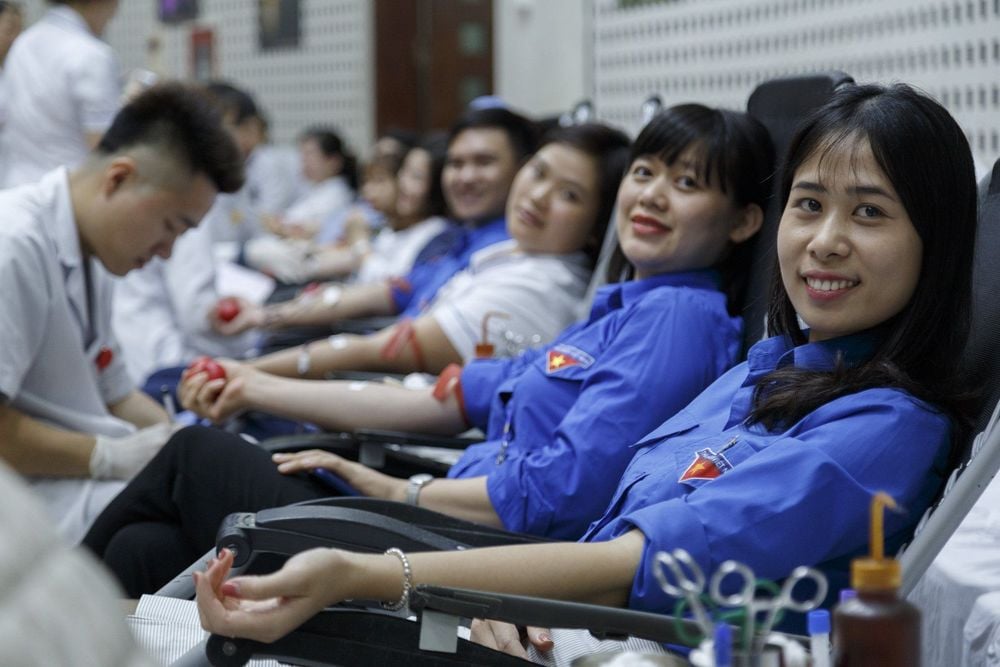
Ngày hội Hiến máu tình nguyện
In 2000, the Government decided to change to April 7 the Global Health Day for Blood Transfusion Safety as a National Blood Donation Promotion Day. As a result, the amount of blood for treatment has increased many times, reducing professional blood donors, increasing voluntary blood donors, at the Institute of Hematology - Blood Transfusion achieved > 65%.
January 1995 : Setting the price of a blood unit by the Ministry of Health - Finance - Investment plan decided, this is the price of the first blood unit. Thanks to this decision, blood transfusion in our country has taken a new step forward. Renovating equipment for blood collection and preservation:
Replace glass bottles with plastic bags (January 1995) as International
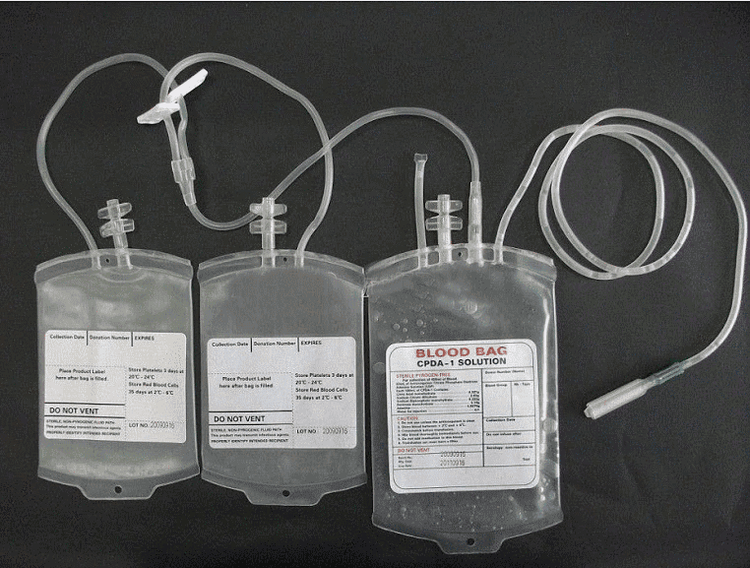
Túi dẻo lấy máu được thay thế cho chai thủy tinh
Replace the bed with a blood collection chair like International (since 1/1996), Blood and plasma storage refrigerator (1996) (non-refundable aid program of the Government of Luxembourg). Screening for 5 infectious diseases as required by the World Health Organization nationwide: + HIV, syphilis, malaria (since 1993)
+ HBV (since 1994)
+ HCV (since 1996). By 1999, 100% of blood units had been screened for 5 infections at all Provincial and District Hospitals that used blood.
Discarded >1000 blood donors with anti-HIV+, tens of thousands of people with HCV +, HBV +, ensuring blood transfusion safety.
From 1996 to 1999: Production and standardization of blood products (State-level research project on production of blood products; and a research project on production and standardization of blood products from 2000 to 2002 of the Institute of Hematology). - Blood transfusion), including:
Mass of poor red blood cells and white blood cells Platelet pool, platelets from 1 individual Fresh plasma, fresh frozen plasma Factor VIII freezing Simultaneously with the establishment of the treatment center Hemophilia (1999) and joining the International Society of Hemophilia (2000) have given great hope to hemophilia patients Neutropenia: this preparation has saved the lives of many patients with drug-resistant (untreatable) infections. ). Development of clinical blood transfusion: indication and rational use of blood and blood products. At the National Institute of Hematology and Blood Transfusion, after accepting the State-level project on the production of blood products (1996-1999) and the State-level project on the production and standardization of blood products used for human treatment (2000-2002), up to now, partial blood transfusion at the National Institute of Hematology - Blood Transfusion and dependent hospitals of Hanoi Blood Bank has reached 100%, and is currently expanding to other provinces and cities in the region. nationwide. This is a big change in awareness and habits of whole blood transfusion in hospitals, and at the same time created a turning point in hemophilia care in our country since 1999.
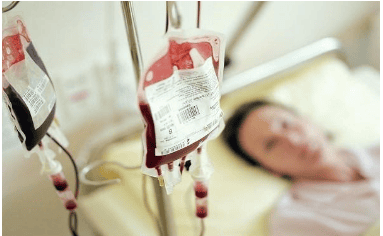
Truyền máu lâm sàng
- Thanks to the development of blood transfusion, hematopoietic stem cell marrow transplantation has been carried out in 3 major hospitals: Ho Chi Minh City Hospital of Hematology and Blood Transfusion (1995), Hue Central Hospital (2004), Military Hospital 108 (2005).
Period 2001 - 2015: The main goal is to modernize the Blood Transfusion industry, to soon integrate with the Regional and World Blood Transfusion. To accomplish this goal, we have:
- Developed the National Blood Transfusion Safety Program approved by the Prime Minister in December 2001, in the direction of focusing: one Blood Bank supplying many hospitals, in order to improve the quality of blood products and the effectiveness of clinical blood transfusions with blood in reserve so that blood is available whenever needed, including at district level and equivalent. This program proceeds in two steps:
+ Step 1 focuses on provincial level, blood collection and blood screening at district and equivalent hospitals;
+ Step 2 focuses on building Regional Blood Banks in 3-4 neighboring provinces, with about 15 Blood Transfusion Centers expected nationwide.
- Building a sample regional blood bank in Hanoi, Hue, Ho Chi Minh City, Can Tho, with the Bank's loan. This project was approved by the Prime Minister in January 2002. Aiming to strive for 2010 - 2015, the whole country unified a blood quality according to European standards. Ensuring the safety of blood transfusion, having enough blood for treatment, emergency, having blood in reserve for disaster step by step modernize blood transfusion in our country, soon integrate with regional and world blood transfusion.
- March 4, 2019 : The Austrian Agency for Health and Food Safety (AGES) officially recognized the Blood Bank of the Blood Transfusion Hospital. Ho Chi Minh City hematology meets European GMP standard (European GMP).
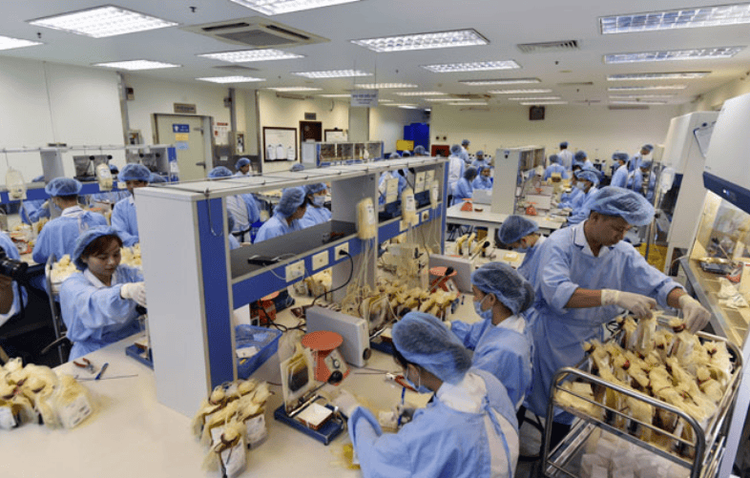
Khoa điều chế các thành phần máu, Viện Huyết học - Truyền máu Trung ương
Stem cells are used in the treatment of diseases
One of the great achievements of the twentieth century and being developed in the twenty-first century is the problem of stem cells applied in the treatment of diseases. Since the 70s of the last century, along with the knowledge of HLA leukocyte antigens, immunosuppressants and hematopoietic cytokines, hematopoietic stem cell transplantation has developed a new step. Then, bone marrow transplantation is performed by taking whole nucleated cells isolated from the marrow and transfused into the patient.
From the years 1990 - 2000, hematopoietic stem cell transplantation has taken another step, which is marrow transplantation using CD34-marked cells, which are isolated from bone marrow, umbilical cord blood, peripheral blood, and result. combined with stem cell cleaning method to a new step. Up to now, in the early years of the 21st century, the problem of stem cells in treatment is not only limited to hematopoietic stem cell transplantation but also to a broader development such as stem cell transplantation for patients with cancer. heart disease, brain disease, diabetes... also had initial results. This topic is attracting many researchers in the world and in Vietnam, hoping to successfully culture stem cells and understand the nature of these organ-specific cytokines.
Please dial HOTLINE for more information or register for an appointment HERE. Download MyVinmec app to make appointments faster and to manage your bookings easily.




